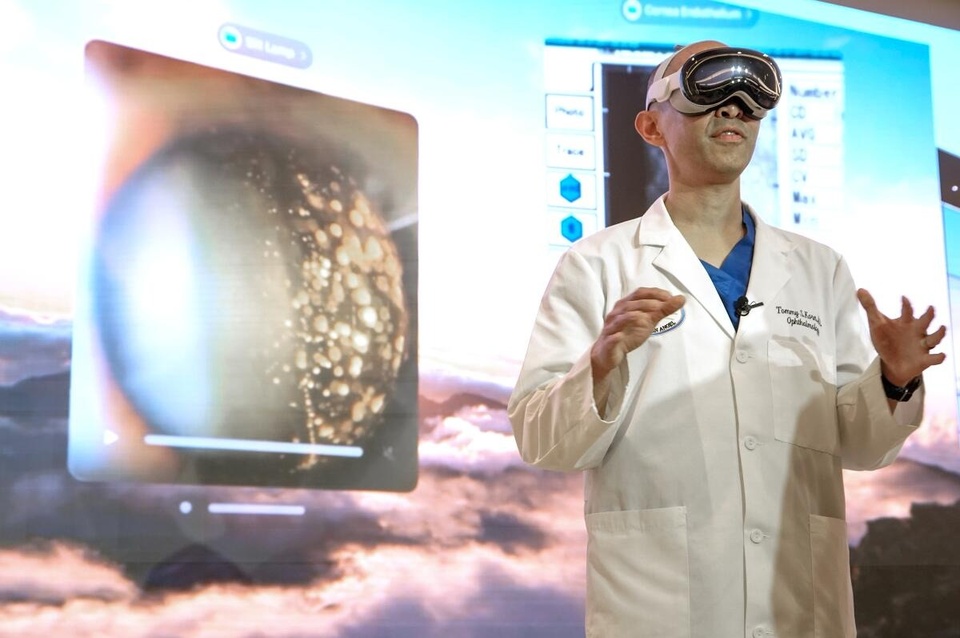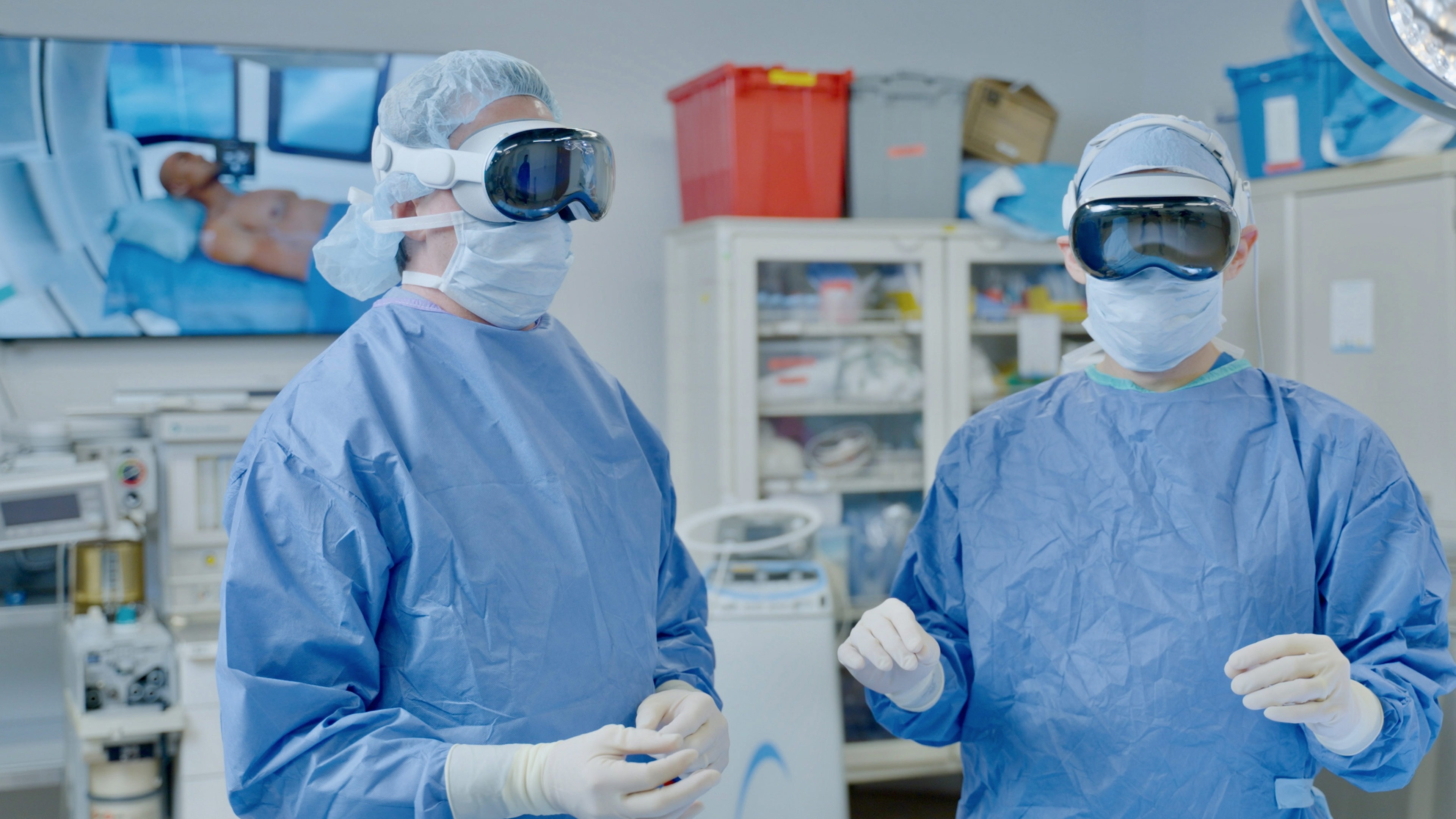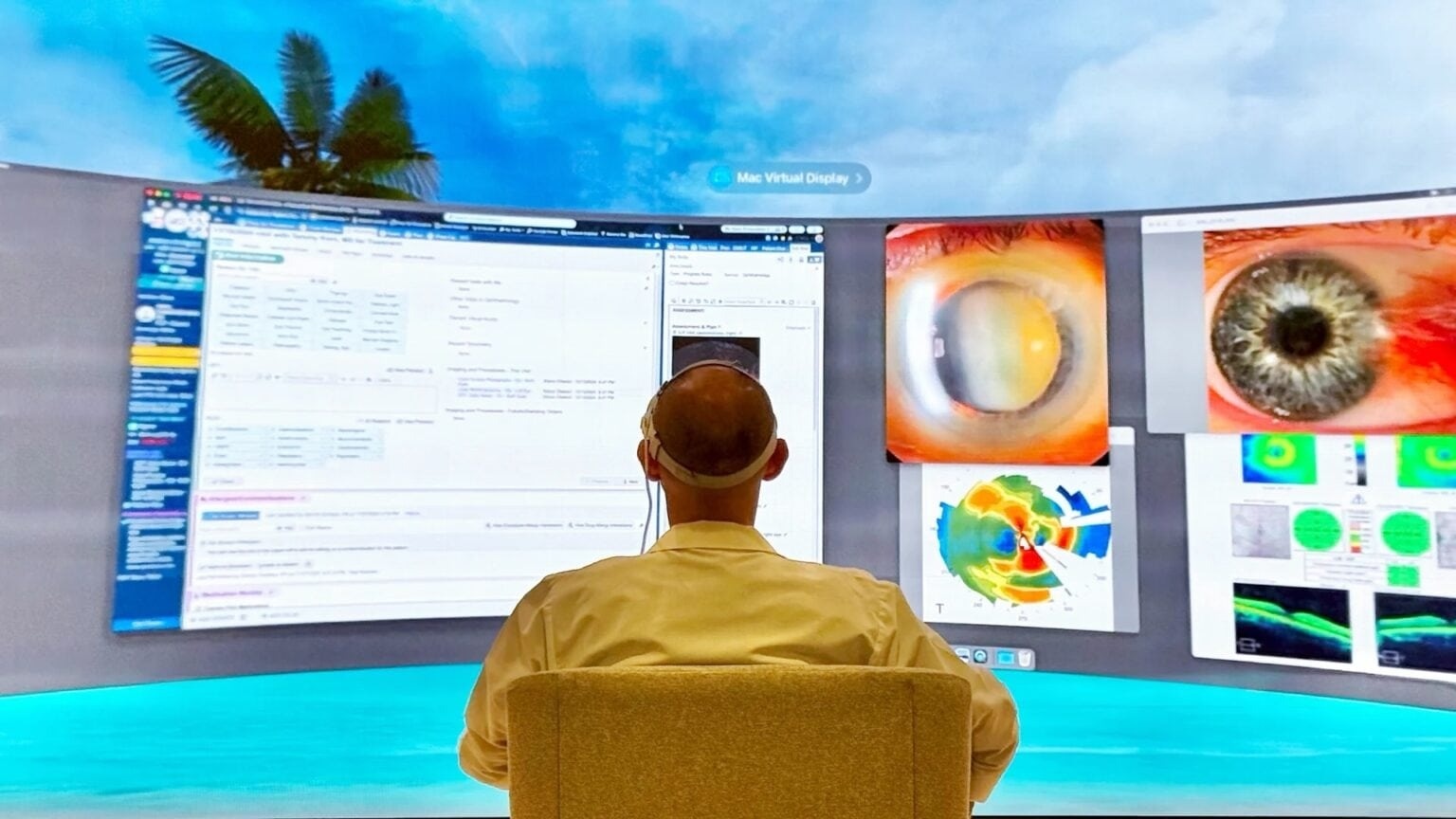 |
Ophthalmologist Tommy Korn demonstrates wearing Vision Pro during surgery. Photo: Sharp HealthCare . |
In early 2024, surgeon Ryan Broderick of UC San Diego Health complained about the number of screens in the operating room. While they provide guidance for minimally invasive surgeries, they also add complexity.
“We looked around the operating room, and there were so many screens and it was so confusing,” Dr. Broderick recalled. From there, his team looked for a better solution. A reasonable arrangement of screens makes it easier for doctors to see information, while also avoiding muscle strain and injury from having to turn around a lot.
According to Fast Company , the doctors’ plan came about just as Apple was releasing the Vision Pro. One of the device’s standout features is the ability to superimpose multiple virtual displays onto the real world. After testing it out, Broderick was impressed with the benefits the glasses offered.
“To date, we have performed over 50 surgeries with great success,” Mr. Broderick emphasized.
New experience with Vision Pro
After a year on the market, the Vision Pro has not been very prominent in Apple's product line. Most of the debate revolves around the $ 3,500 price, the bulky size and the lack of practical uses.
“Right now, this is an early adopter product. It’s for people who want to experience future technology right now,” CEO Tim Cook explained in an interview with the WSJ in October 2024.
While it may not be a hit with the average consumer, Vision Pro is finding a place in hospitals and medical centers. UCSD Health isn’t the only organization that sees the device’s potential.
 |
Surgeon wearing Vision Pro. Photo: Sharp HealthCare . |
Sharp HealthCare, a healthcare service in San Diego (USA), purchased 30 Vision Pros and established the Spatial Computing Center of Excellence.
On January 30, Sharp held a conference on the application of Vision Pro in surgery, medical examination, medical education and many other medical activities.
“There were 300 people from 10 countries attending the conference, and they were very excited,” said Dr. Tommy Korn, an ophthalmologist at Sharp HealthCare.
Apple representatives affirmed that Sharp's conference proves that Vision Pro is capable of creating new experiences and bringing positive impacts.
“This is truly the right time to bring together key leaders in the healthcare industry.
They not only listen, but also connect, chat, and share how to use Vision Pro for inspiration and best practices,” said Susan Prescott, vice president of Worldwide Developer Relations, Enterprise & Education Markets at Apple.
Be amazed by how Vision Pro works
The healthcare industry isn’t known for pioneering technological change. But with Vision Pro, Prescott points out that many leaders aren’t just talking about it, they’re putting it into practice.
“Sometimes it takes a while for businesses to adopt technology. This even surprises us in the way we use and develop apps for our products,” an Apple representative shared.
The concept of “spatial computing” is the advantage of Vision Pro. Unlike the iPhone or iPad, Vision Pro is promoted as the computer of the future, not simply a virtual reality (VR) headset for playing games or chatting.
Another advantage of the Vision Pro comes from the Apple ecosystem, which makes it easy for developers to access and write apps. The device also appeals to Apple users. According to Korn, 90% of Sharp HealthCare’s doctors use iPhones, and more than half use Macs at home.
The $3,500 price tag is also very affordable in the medical industry. In an interview, Korn said Sharp's operating room monitors cost $20,000 .
Finally, Vision Pro's technology is suitable for applications in the healthcare industry, such as the R1 chip that takes image signals and transmits them to the screen with low latency. This allows doctors to wear the glasses for long periods of time without too much discomfort.
 |
Vision Pro could replace expensive monitors in operating rooms. Photo: Sharp HealthCare . |
Sharp HealthCare also partnered with Zeiss, the optical company that makes prescription lenses for Vision Pro, to develop an app that helps ophthalmologists view cataract surgery images.
In March 2024, hip and knee surgery robot maker Stryker released a 3D surgical planning app. Publisher Elsevier launched a reference app for modeling the heart and cardiovascular system.
Apple also updated visionOS with features for professional environments such as device management (Mobile Device Management) and support for ultra-wide screen ratios.
For many people, wearing and using Vision Pro is still quite awkward, even just making a video call or watching a movie. However, Dr. Broderick of UCSD Health said that doctors do not feel uncomfortable or lose focus when wearing the glasses. Surgeries usually take about 45-90 minutes, consistent with the battery life of the glasses.
Broderick confidently predicts that spatial computing will continue to mature across a variety of devices, not just the Vision Pro.
“Let’s say I’m watching a surgeon perform surgery but they’re standing in the wrong position. Instead of switching places with them, I can draw on the screen where they should be standing, which can be helpful,” Broderick said.
Sharp HealthCare's Dr. Korn also envisions many uses, such as using Vision Pro to anesthetize patients before surgery.



































































































Comment (0)